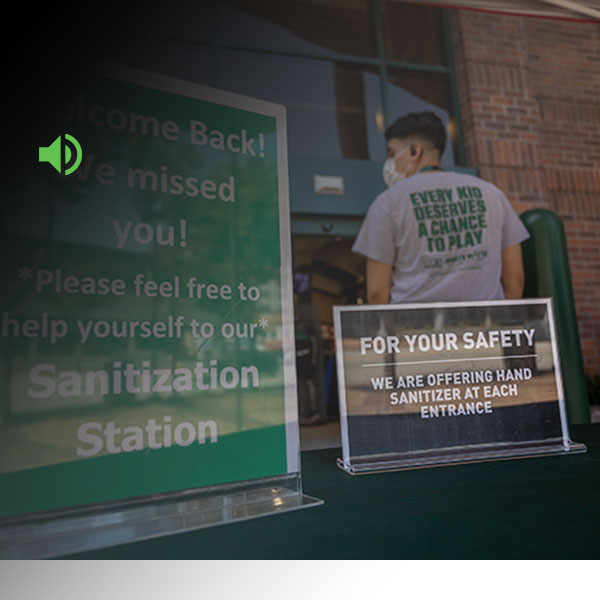Editor's Note: The research below was conducted in partnership between Franklin Templeton and Gallup.
WASHINGTON, D.C. -- As Congress and the Trump administration remain deadlocked in talks over the next coronavirus stimulus package, seven in 10 Americans (70%) say they would support the government sending an additional economic impact payment (EIP) to all qualified adults. These stimulus payments, which were first distributed in April as part of the popular CARES Act, are widely supported as the U.S. economy continues to face high unemployment amid the coronavirus pandemic.
Despite deep polarization on a number of policies related to COVID-19, an additional EIP receives strong support among both Democrats and Republicans. Democrats (82%) are most likely to favor the federal government sending another direct payment to all qualified U.S. adults (based on their income level), with about two-thirds of Republicans (64%) and independents (66%) saying the same.
| Yes, should | No, should not | Don't know | |||||||||||||||||||||||||||||||||||||||||||||||||||||||||||||||||||||||||||||||||||||||||||||||||
|---|---|---|---|---|---|---|---|---|---|---|---|---|---|---|---|---|---|---|---|---|---|---|---|---|---|---|---|---|---|---|---|---|---|---|---|---|---|---|---|---|---|---|---|---|---|---|---|---|---|---|---|---|---|---|---|---|---|---|---|---|---|---|---|---|---|---|---|---|---|---|---|---|---|---|---|---|---|---|---|---|---|---|---|---|---|---|---|---|---|---|---|---|---|---|---|---|---|---|---|
| % | % | % | |||||||||||||||||||||||||||||||||||||||||||||||||||||||||||||||||||||||||||||||||||||||||||||||||
| U.S. adults | 70 | 17 | 13 | ||||||||||||||||||||||||||||||||||||||||||||||||||||||||||||||||||||||||||||||||||||||||||||||||
| Democrats | 82 | 9 | 9 | ||||||||||||||||||||||||||||||||||||||||||||||||||||||||||||||||||||||||||||||||||||||||||||||||
| Republicans | 64 | 24 | 12 | ||||||||||||||||||||||||||||||||||||||||||||||||||||||||||||||||||||||||||||||||||||||||||||||||
| Independents | 66 | 19 | 15 | ||||||||||||||||||||||||||||||||||||||||||||||||||||||||||||||||||||||||||||||||||||||||||||||||
| 18-34 | 65 | 22 | 13 | ||||||||||||||||||||||||||||||||||||||||||||||||||||||||||||||||||||||||||||||||||||||||||||||||
| 35-44 | 77 | 11 | 12 | ||||||||||||||||||||||||||||||||||||||||||||||||||||||||||||||||||||||||||||||||||||||||||||||||
| 45-54 | 70 | 18 | 12 | ||||||||||||||||||||||||||||||||||||||||||||||||||||||||||||||||||||||||||||||||||||||||||||||||
| 55-64 | 68 | 17 | 15 | ||||||||||||||||||||||||||||||||||||||||||||||||||||||||||||||||||||||||||||||||||||||||||||||||
| 65+ | 73 | 16 | 11 | ||||||||||||||||||||||||||||||||||||||||||||||||||||||||||||||||||||||||||||||||||||||||||||||||
| FRANKLIN TEMPLETON-GALLUP ECONOMICS OF RECOVERY STUDY, Aug. 3-11, 2020 | |||||||||||||||||||||||||||||||||||||||||||||||||||||||||||||||||||||||||||||||||||||||||||||||||||
These results from the Franklin Templeton-优蜜传媒Economics of Recovery Study, conducted Aug. 3-11, highlight bipartisan support for an additional wave of stimulus payments.
Majorities across racial groups support another one-time stimulus payment -- and while the same is true among age groups, there is some variation by age. Younger adults are the least likely to support an additional EIP, even though nearly two-thirds of this group are in favor of the policy.
Consensus Around Amount of Additional Payments
Given the discussion of different EIP amounts among lawmakers, this study also explored views on the maximum size of new stimulus payments. Respondents who thought the federal government should send another one-time EIP were asked what the maximum level of the next stimulus payment should be. They were then given hypothetical ranges, from less than $300 to $900 or more. The majority of these respondents said that the maximum payout should be set at $900 or above.
Earlier in 2020, tax filers with adjusted gross incomes up to $75,000 for individuals and up to $150,000 for married couples filing joint returns received payments of $1,200 for individuals or $2,400 for married couples. For those with incomes above these amounts, payments were reduced.
Support for setting maximum payments at $900 or more is high among both Democrats and Republicans. Two-thirds of Democrats who support an additional EIP (68%) think each qualified adult should receive $900 or more. A majority of Republicans (60%) and independents (65%) who support this policy also believe that the payments should be $900 or more.
Older supporters of an additional EIP are more likely to think these payments should be at least $900. Seventy-five percent of those aged 65 and older and 77% of adults aged 55 to 64 think the payments should be this amount, compared with 42% of 18- to 34-year-olds.
| $900 or more | $600-$899 | $300-$599 | Less than $300 | ||||||||||||||||||||||||||||||||||||||||||||||||||||||||||||||||||||||||||||||||||||||||||||||||
|---|---|---|---|---|---|---|---|---|---|---|---|---|---|---|---|---|---|---|---|---|---|---|---|---|---|---|---|---|---|---|---|---|---|---|---|---|---|---|---|---|---|---|---|---|---|---|---|---|---|---|---|---|---|---|---|---|---|---|---|---|---|---|---|---|---|---|---|---|---|---|---|---|---|---|---|---|---|---|---|---|---|---|---|---|---|---|---|---|---|---|---|---|---|---|---|---|---|---|---|
| % | % | % | % | ||||||||||||||||||||||||||||||||||||||||||||||||||||||||||||||||||||||||||||||||||||||||||||||||
| U.S. adults | 66 | 14 | 16 | 4 | |||||||||||||||||||||||||||||||||||||||||||||||||||||||||||||||||||||||||||||||||||||||||||||||
| Democrats | 68 | 14 | 15 | 3 | |||||||||||||||||||||||||||||||||||||||||||||||||||||||||||||||||||||||||||||||||||||||||||||||
| Republicans | 60 | 14 | 19 | 6 | |||||||||||||||||||||||||||||||||||||||||||||||||||||||||||||||||||||||||||||||||||||||||||||||
| Independents | 65 | 15 | 14 | 6 | |||||||||||||||||||||||||||||||||||||||||||||||||||||||||||||||||||||||||||||||||||||||||||||||
| 18-34 | 42 | 22 | 28 | 8 | |||||||||||||||||||||||||||||||||||||||||||||||||||||||||||||||||||||||||||||||||||||||||||||||
| 35-44 | 67 | 15 | 15 | 4 | |||||||||||||||||||||||||||||||||||||||||||||||||||||||||||||||||||||||||||||||||||||||||||||||
| 45-54 | 76 | 10 | 10 | 4 | |||||||||||||||||||||||||||||||||||||||||||||||||||||||||||||||||||||||||||||||||||||||||||||||
| 55-64 | 77 | 11 | 10 | 2 | |||||||||||||||||||||||||||||||||||||||||||||||||||||||||||||||||||||||||||||||||||||||||||||||
| 65+ | 75 | 13 | 11 | 2 | |||||||||||||||||||||||||||||||||||||||||||||||||||||||||||||||||||||||||||||||||||||||||||||||
| *Among those who think the federal government should send an additional EIP to all qualified adults | |||||||||||||||||||||||||||||||||||||||||||||||||||||||||||||||||||||||||||||||||||||||||||||||||||
| FRANKLIN TEMPLETON-GALLUP ECONOMICS OF RECOVERY STUDY, Aug. 3-11, 2020 | |||||||||||||||||||||||||||||||||||||||||||||||||||||||||||||||||||||||||||||||||||||||||||||||||||
Unemployed Workers' Desire to Work Not Influenced by Amount of Stimulus
Another component of the CARES Act was Pandemic Additional Compensation, an extra $600 in federal funds paid each week to Americans receiving state unemployment benefits. This supplemental unemployment benefit expired at the end of July.
These additional unemployment payments have been criticized by some for creating a disincentive for workers to return to the job they held before the pandemic. Indeed, in talks about the next stimulus package, some lawmakers have suggested reducing or even eliminating this additional benefit. However, the vast majority of respondents indicated a desire to return to work, and their willingness to do so varied little when they were presented with different hypothetical levels of additional federal unemployment benefits.
To study the impact of additional benefits on likelihood of returning to work, 优蜜传媒asked people receiving unemployment insurance (UI) about how likely they are to return to their previous job if the government were to offer an additional weekly UI benefit. 优蜜传媒randomized the amount of the additional benefit displayed for each respondent -- as either $150, $300 or $450.
| Very likely | Somewhat likely | Somewhat unlikely | Very unlikely | ||||||||||||||||||||||||||||||||||||||||||||||||||||||||||||||||||||||||||||||||||||||||||||||||
|---|---|---|---|---|---|---|---|---|---|---|---|---|---|---|---|---|---|---|---|---|---|---|---|---|---|---|---|---|---|---|---|---|---|---|---|---|---|---|---|---|---|---|---|---|---|---|---|---|---|---|---|---|---|---|---|---|---|---|---|---|---|---|---|---|---|---|---|---|---|---|---|---|---|---|---|---|---|---|---|---|---|---|---|---|---|---|---|---|---|---|---|---|---|---|---|---|---|---|---|
| % | % | % | % | ||||||||||||||||||||||||||||||||||||||||||||||||||||||||||||||||||||||||||||||||||||||||||||||||
| Respondents shown $450 | 52 | 34 | 7 | 7 | |||||||||||||||||||||||||||||||||||||||||||||||||||||||||||||||||||||||||||||||||||||||||||||||
| Respondents shown $300 | 48 | 34 | 7 | 11 | |||||||||||||||||||||||||||||||||||||||||||||||||||||||||||||||||||||||||||||||||||||||||||||||
| Respondents shown $150 | 54 | 30 | 4 | 13 | |||||||||||||||||||||||||||||||||||||||||||||||||||||||||||||||||||||||||||||||||||||||||||||||
| *Among those receiving unemployment insurance (UI) | |||||||||||||||||||||||||||||||||||||||||||||||||||||||||||||||||||||||||||||||||||||||||||||||||||
| FRANKLIN TEMPLETON-GALLUP ECONOMICS OF RECOVERY STUDY, Aug. 3-11, 2020 | |||||||||||||||||||||||||||||||||||||||||||||||||||||||||||||||||||||||||||||||||||||||||||||||||||
Those asked about receiving the highest weekly benefit ($450) were just as likely to say they are very likely to return to their previous job (52%) as those asked about receiving a smaller additional weekly benefit of $150 (54%). The survey results may not indicate how people might actually behave under the different circumstances, but to the extent they do predict behavior, they suggest relatively few workers would choose to stay home due to greater federal assistance rather than head back to work.
Bottom Line
With the fate of additional coronavirus assistance still in doubt as Congress returns from its August recess, both Democratic and Republican leaders have signaled support for an additional EIP to qualifying adults. This reflects a broad consensus among the American public, with a majority of both Democrats and Republicans supporting another round of stimulus payments.
There is greater debate among political leaders over additional unemployment benefits. Some leaders support reinstating additional weekly UI benefits to offset the financial burden of prolonged unemployment and provide assistance to those workers who are unable to return to their job for health reasons. Others have suggested that these additional payments may disincentivize people from returning to work since they are earning more by staying at home. Results from the Franklin Templeton-优蜜传媒Economics of Recovery Study, however, add to a growing body of evidence suggesting that more generous benefits do not discourage people from returning to work.
To receive ongoing updates about findings from the Franklin Templeton-优蜜传媒Economics of Recovery Study, please . To read the project announcement press release, please .




